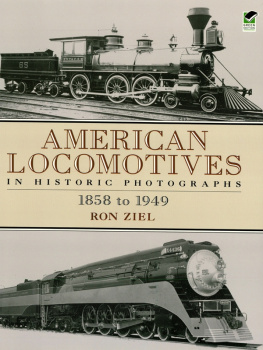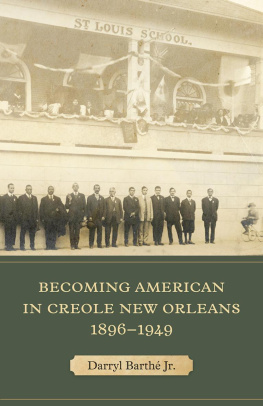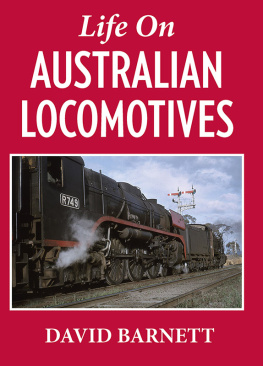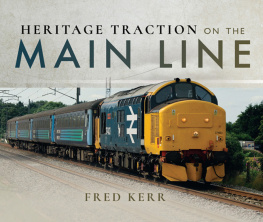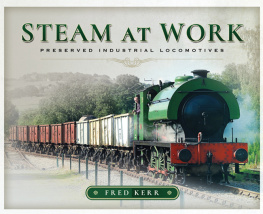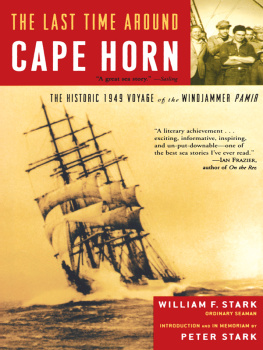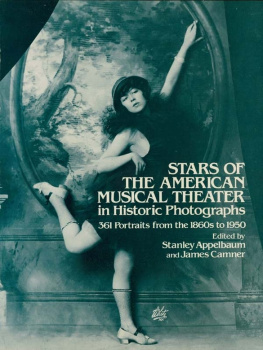Ron Ziel - American Locomotives in Historic Photographs: 1858 to 1949
Here you can read online Ron Ziel - American Locomotives in Historic Photographs: 1858 to 1949 full text of the book (entire story) in english for free. Download pdf and epub, get meaning, cover and reviews about this ebook. year: 2013, publisher: Dover Publications, genre: Non-fiction. Description of the work, (preface) as well as reviews are available. Best literature library LitArk.com created for fans of good reading and offers a wide selection of genres:
Romance novel
Science fiction
Adventure
Detective
Science
History
Home and family
Prose
Art
Politics
Computer
Non-fiction
Religion
Business
Children
Humor
Choose a favorite category and find really read worthwhile books. Enjoy immersion in the world of imagination, feel the emotions of the characters or learn something new for yourself, make an fascinating discovery.
- Book:American Locomotives in Historic Photographs: 1858 to 1949
- Author:
- Publisher:Dover Publications
- Genre:
- Year:2013
- Rating:4 / 5
- Favourites:Add to favourites
- Your mark:
- 80
- 1
- 2
- 3
- 4
- 5
American Locomotives in Historic Photographs: 1858 to 1949: summary, description and annotation
We offer to read an annotation, description, summary or preface (depends on what the author of the book "American Locomotives in Historic Photographs: 1858 to 1949" wrote himself). If you haven't found the necessary information about the book — write in the comments, we will try to find it.
Ron Ziel: author's other books
Who wrote American Locomotives in Historic Photographs: 1858 to 1949? Find out the surname, the name of the author of the book and a list of all author's works by series.
American Locomotives in Historic Photographs: 1858 to 1949 — read online for free the complete book (whole text) full work
Below is the text of the book, divided by pages. System saving the place of the last page read, allows you to conveniently read the book "American Locomotives in Historic Photographs: 1858 to 1949" online for free, without having to search again every time where you left off. Put a bookmark, and you can go to the page where you finished reading at any time.
Font size:
Interval:
Bookmark:
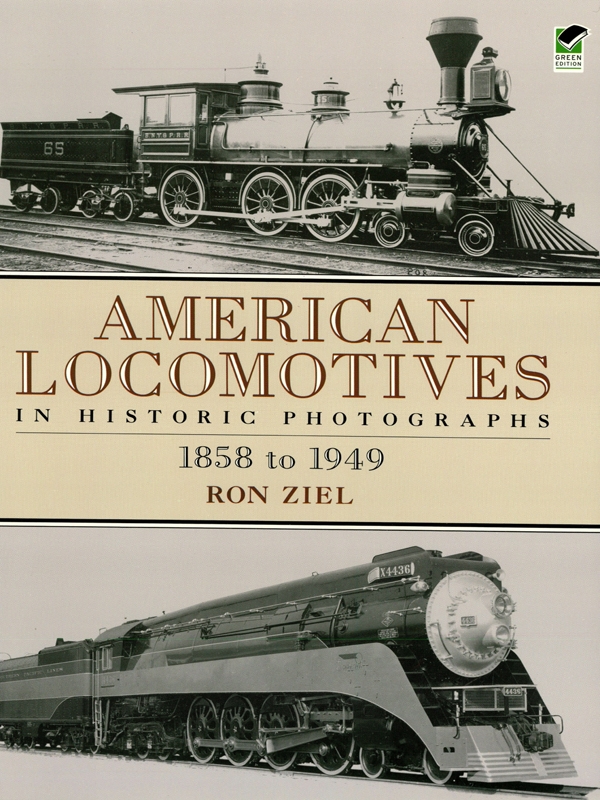
NATURAL ART FORMS: 120 CLASSIC PHOTOGRAPHS, Karl Blossfeldt. (0-486-40003-4)
ALVIN LANGDON COBURN, PHOTOGRAPHER, Alvin L. Coburn. (0-486-23685-4)
AMERICAN VICTORIAN COSTUME IN EARLY PHOTOGRAPHS, Priscilla Harris Dalrymple. (26533-1)
GREAT NEWS PHOTOS AND THE STORIES BEHIND THEM, John Faber. (0-486-23667-6)
GENTHES PHOTOGRAPHS OF SAN FRANCISCOS OLD CHINATOWN, Arnold Genthe and John Kuo Wei Tchen. (0-486-24592-6)
VICTORIAN AND EDWARDIAN FASHION: A PHOTOGRAPHIC SURVEY, Alison Gernsheim. (0-486-24205-6)
CREATIVE PHOTOGRAPHY: AESTHETIC TRENDS 1839-1960, Helmut Gernsheim. (0-486-26750-4)
EADWEARD MUYBRIDGE: THE FATHER OF THE MOTION PICTURE, Gordon Hendricks. (0-486-41535-X)
THE BUILDING OF THE PANAMA CANAL IN HISTORIC PHOTOGRAPHS, Ulrich Keller. (0-486-24408-3)
AMERICAN ART DECO: AN ILLUSTRATED SURVEY, R. L. Leonard and C. A. Glassgold. (0-486-43374-9)
CHILDRENS FASHIONS OF THE PAST IN PHOTOGRAPHS, Alison Mager (ed.). (0-486-23697-8)
NANTUCKET YESTERDAY AND TODAY, John W. McCalley. (0-486-24059-2)
ERICH MENDELSOHNS AMERIKA: 82 PHOTOGRAPHS, Erich Mendelsohn. (0-486-27591-4)
How THE OTHER HALF LIVES, Jacob Riis. (0-486-22012-5)
THE DEPRESSION YEARS AS PHOTOGRAPHED BY ARTHUR ROTHSTEIN, Arthur Rothstein. (0-486-23590-4)
OLD ROCKAWAY, NEW YORK, IN EARLY PHOTOGRAPHS, Vincent Seyfried and William Asadorian. (0-486-40668-7)
PHOTO ARCHIVE OF FAMOUS PLACES OF THE WORLD, Donald M. Witte (ed.). (0-486-27496-9)
INTRODUCTION TO LIGHT : THE PHYSICS OF LIGHT, VISION, AND COLOR, Gary Waldman. (0-486-42118-X)
THE LONG ISLAND RAILROAD IN EARLY PHOTOGRAPHS, Ron Ziel (ed.). (0-486-26301-0)
Paperbound unless otherwise indicated. Available at your book dealer, online at www.doverpublications.com , or by writing to Dept. 23, Dover Publications, Inc., 31 East 2nd Street, Mineola, NY 11501. For current price information or for free catalogs (please indicate field of interest), write to Dover Publications or log on to www.doverpublications.com and see every Dover book in print. Each year Dover publishes over 500 books on fine art, music, crafts and needlework, antiques, languages, literature, childrens books, chess, cookery, nature, anthropology, science, mathematics, and other areas.
Manufactured in the U.S.A.
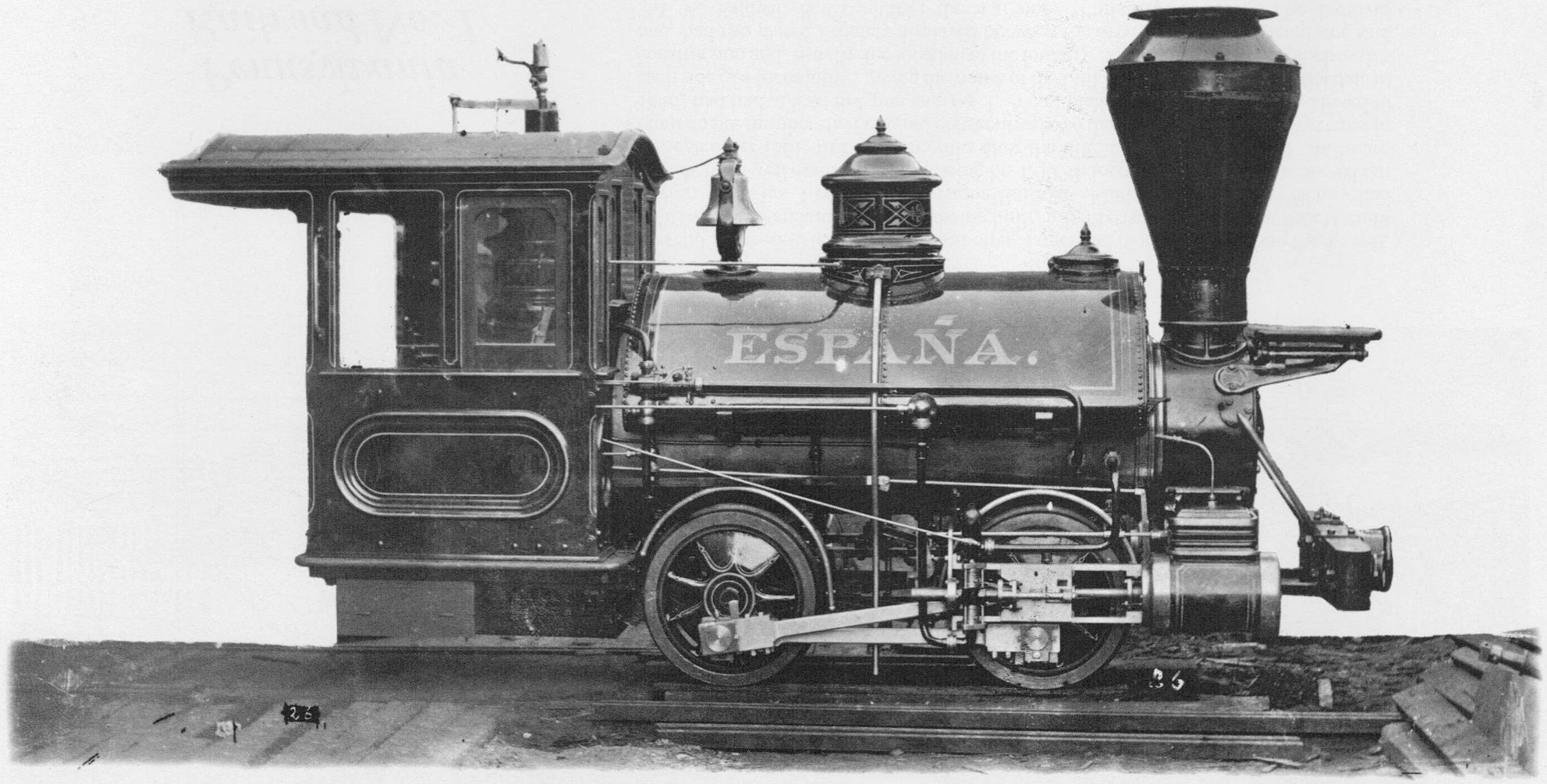
One of the earliest builder photographs is also of a primeval export locomotive: a diminutive narrow-gauge 040 tank engine that was built for the government of Spain in 1858. The tapered balloon stack is a good indication of its age, for this style was pretty well outdated by 1860. A most basic locomotive, Espaa was equipped with an early injector just forward of the cab, as well as a crosshead-mounted water pump, and the steam dome was placed above the firebox, inside the cab, with safety valve and whistle protruding through the roof.
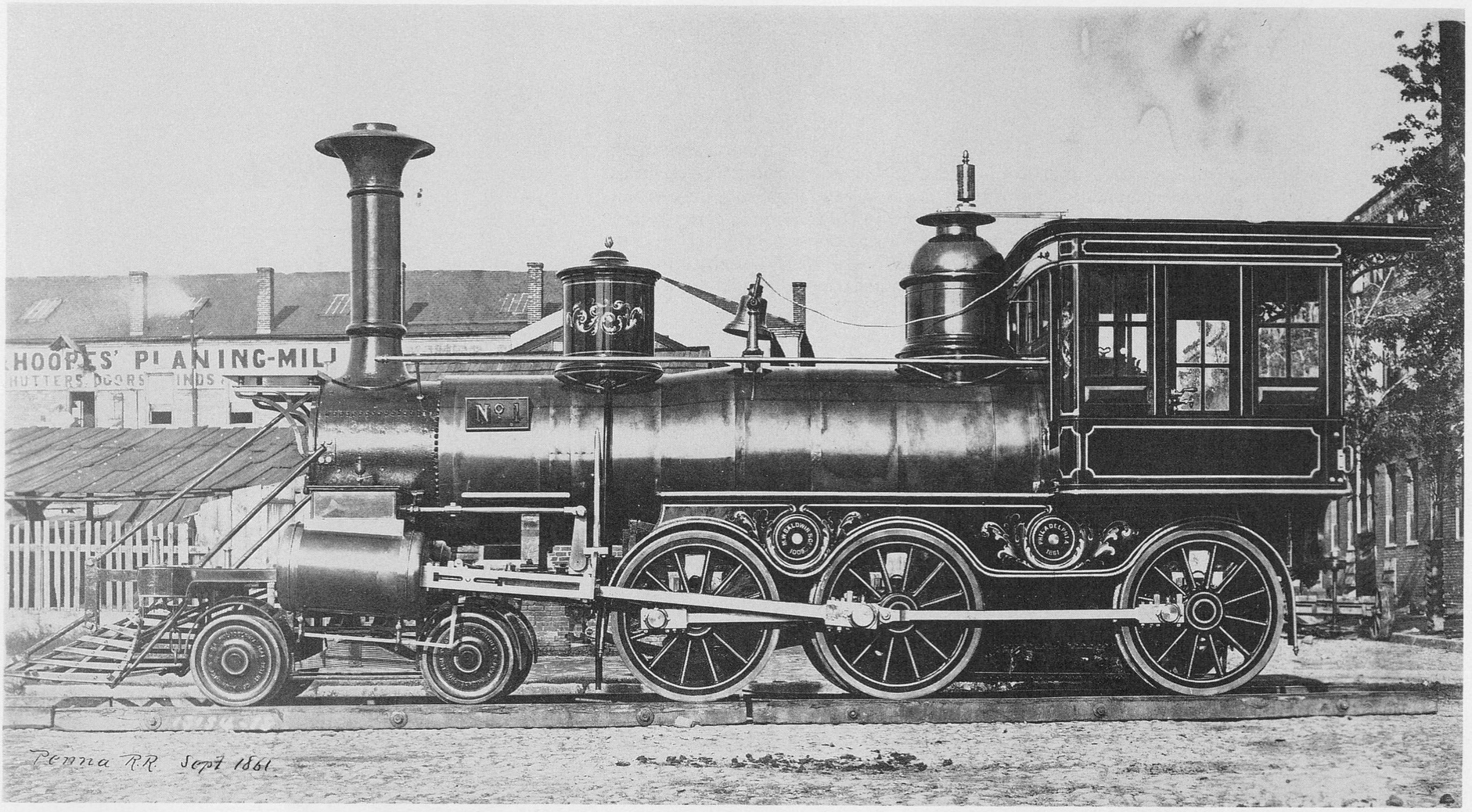
By 1860, the 460 ten-wheeler locomotive, larger and more powerful than the 440, or American Standard, type, was being built, initially as a heavy (for that time) freight engine. With no. 1 of the Pennsylvania Railroad, Mathias W. Baldwins factory had already been well established, this being his 1,009th locomotive, which was turned out in September 1861, just a few months after the outbreak of the Civil War. Railroads often do not number their engines consecutively, so the P.R. R., which was chartered in 1846, had had at least one previous no. 1. A cast plate, usually of brass, was affixed to each side of a locomotive, giving the name of the builder, the serial number, the date of construction and, usually, the location of the foundry. Some early Baldwins, such as this one, had two plates, ornately displayed between the driving wheels: the front one said M. W Baldwin & Co. 1009; the rear one, Philadelphia 1861. The Baldwin Locomotive Works, as it was later known, went on to erect nearly 75,000 locomotivesincluding some very impressive dieselsbefore all production ceased in the 1950s.

Pennsylvania Railroad 060 no. 216 emerged from the erecting hall at Baldwin in August 1861 as a fearsome apparition of Gothic character, with its bulky components, massive smokestack, high-mounted canted cylinders and awkwardly positioned wheels. The box of a water cistern slung over the boiler and the massive dome scrunched up against the pin-striped cab did nothing to detract from the ungainly visage of this early switch engine. Certainly at this stage of development, the steam locomotive was still experiencing aesthetic growing pains. Within a decade, however, it would mature into an embodiment of elegance and refinement that in taste and proportion would rival the clipper ship and Federal architecture. Such details on no. 216 as the one-piece molded fender over the wheels, the wrought-iron bell cradle and the paint trim could only hint at the princely splendor of the typical steam locomotive later in the nineteenth century.
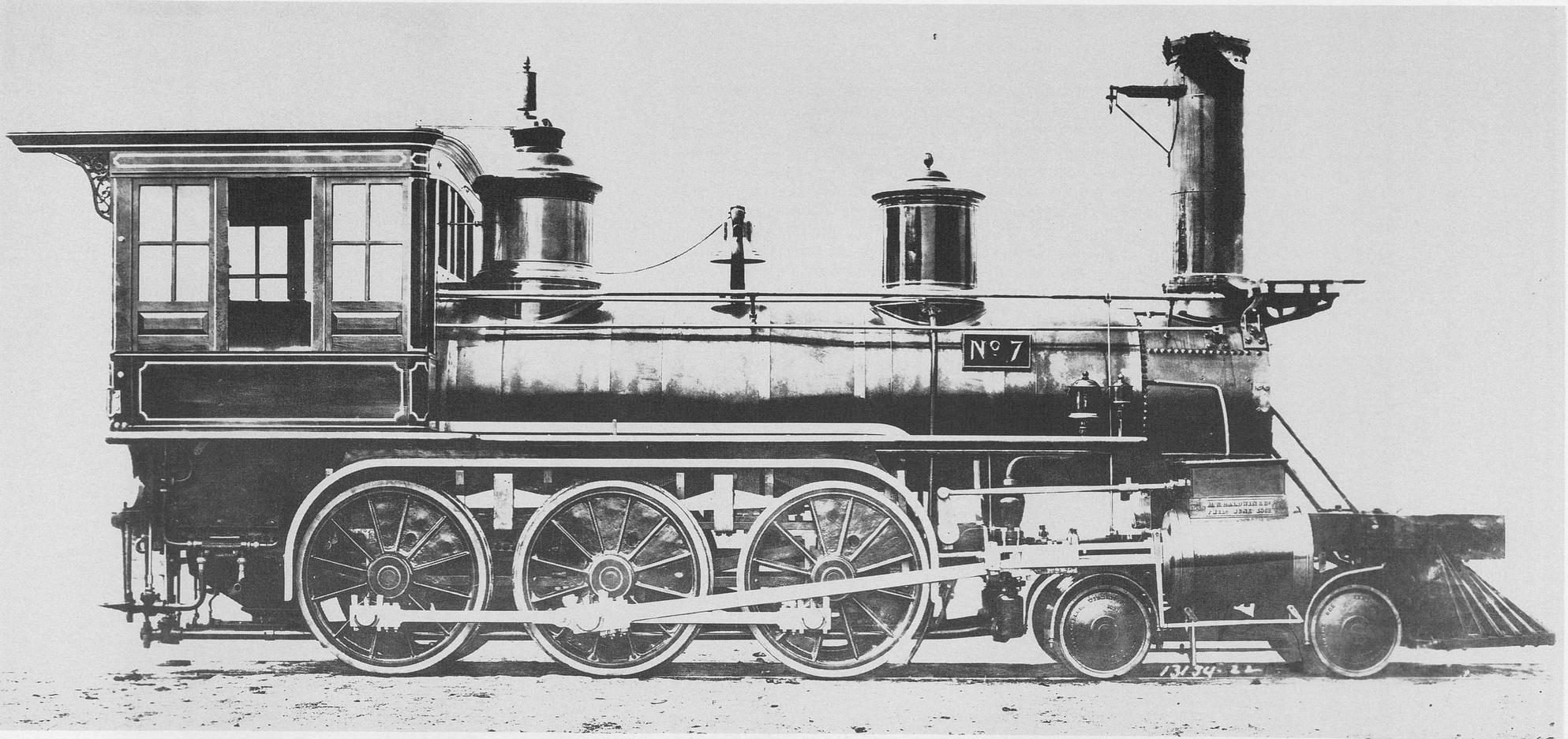
Baldwins 1, 114th locomotive was a utilitarian 460 built for the Eastern Pennsylvania Railroad in June 1862. Instead of mounting a cast plate itemizing the builders information, that data was cast directly into the bottom of the valve chest above the cylinder. Locomotives of this period mounted enormous headlights on a platform directly in front of the smokestack, which housed a large reflector to magnify the weak oil flame that provided the illumination. Often, the railroad itself supplied the headlightsometimes exquisitely decorated, including pastoral scenery or a portrait of the person for whom the machine was namedso many of the factory photos show engines devoid of the lamps. Barely three decades after the power of steam locomotives first proved practical as a successor to that of animals, engines such as no. 7 shown here had already attained a technological sophistication that was recognizable even in its gigantic descendants in the twentieth century.

A year and a month prior to the Golden Spike ceremony at Promontory Point, Utah Territory, on May 10, 1869, Baldwin completed a brutish 460, no. 90, for the Union Pacific. It would be a month before the ten-wheeler arrived on its owners property in Omaha, Nebraska, and went to work hauling freightmuch of it construction materials for the U.P.to help complete the epic labor of the first transcontinental line. Typical of the 440s and 460s of its era, no. 90 had a wide space between the rear sets of driving wheels, to allow room for the firebox to be mounted between the axles. The biggest improvement in locomotive design occurred in the 1890s when trailing wheels enabled the firebox to be carried above the frame. This enabled fireboxes to be increased enormously in size (in both width and length) and ultimately resulted in the high-horsepower steam-generating boilers of the 1900s.
Font size:
Interval:
Bookmark:
Similar books «American Locomotives in Historic Photographs: 1858 to 1949»
Look at similar books to American Locomotives in Historic Photographs: 1858 to 1949. We have selected literature similar in name and meaning in the hope of providing readers with more options to find new, interesting, not yet read works.
Discussion, reviews of the book American Locomotives in Historic Photographs: 1858 to 1949 and just readers' own opinions. Leave your comments, write what you think about the work, its meaning or the main characters. Specify what exactly you liked and what you didn't like, and why you think so.

